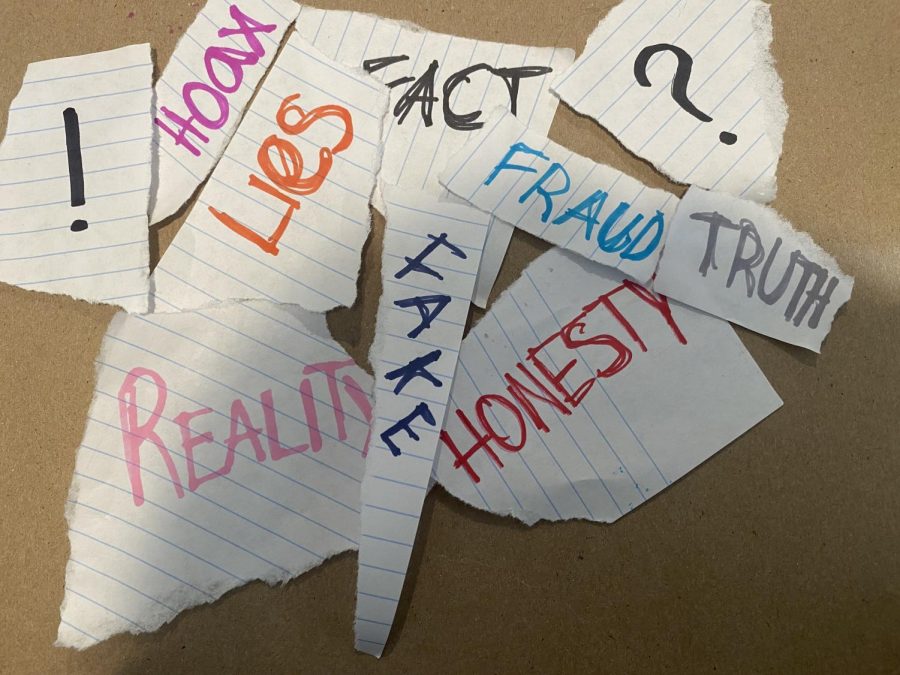How has fake news changed the media?
April 3, 2023
There was once a time when reading the newspaper with a cup of coffee in hand was the standard way to start off a morning. Social media was still a work in progress, and it wasn’t the primary way to learn what was going on in the world. But today, approximately 4.76 billion people use social media, and there has been a huge decline in newspapers.
Social media is beneficial to society in that it’s an easy way to spread information globally through its connectedness. This allows for people to interact easily with one another, causing new global relationships without barriers such as language, money, and distance.
Social media didn’t start becoming the social and cultural force it is today until around 2005. Back then there wasn’t a huge problem with “fake news.” According to Webwise, an Irish Internet Safety Awareness Centre, fake news, or false information, is described as news or stories that are created to misinform and deceive readers. These stories are used to influence people’s views, push a political agenda, or cause confusion, and they can often be a profitable business for online publishers. Fake news deceives people by appearing as a trusted source or by using names and web addresses similar to well known news organizations.
The world is overflowing with fake news. The majority of it is to create negative connotations toward a group of people or one person. For example, at the time of Joe Biden’s election, articles were published stating that he was a pedophile. Who would vote for a known pedophile? No one. Articles are also being published about the LGBTQ community. The stories are often false about people and actions that reflect badly upon the entirety of queer people. For example, according to England’s National Health Service, throughout the health sector, lies were spread that gay and bisexual women are not at risk of getting cervical cancer through the assumption that it was only spread by men. This in turn has led to fewer people showing up for screenings. Although the disease is preventable, many people do not think they need screening, posing a danger to members of the LGBTQ+ community. This was all a result of fake news.
Sometimes the actual stories aren’t the problem but the way they are presented; for example, if all we see on the news is a Black man who is a criminal, we will only have one story and one perspective of Black men. This happens with many people of color based on stereotypes specifically, according to ABC News.
Immigrants in the U.S. are often depicted as “criminals who are stealing jobs, and not paying taxes,” a belief that can be solely informed by what we see on the news, which again isn’t the whole story but one story playing out over and over again.
According to the Northwestern Local News Initiative, journalists are saying that social media platforms have hurt their industry. This is because they contribute to inaccurate, misleading, one-sided news by applying too much control over the variety of news that people are seeing – or not seeing.
Recently the issue of algorithms within social media platforms has come before the U.S. Supreme Court. The court is hearing a case about a law (referred to as “Section 230”) that shields social media sites from lawsuits, protecting tech companies against being sued over content posted online by their users. The court’s decision in this case could radically alter the internet as we know it.
Fox News has been sued by Dominion Voting Systems for $1.6 billion. Dominion claimed the news outlet repeatedly aired allegations that the company’s voting machines were rigged against Trump in the 2020 election while knowing the accusations were false. According to The New York Times, Fox News agreed on April 18 to pay $787.5 million to resolve the defamation suit over the network’s promotion of misinformation, avoiding an extensive trial.
“When fake news is repeated it becomes difficult for the public to discern what’s real,” said Jimmy Gomez, a congressional representative from California.
Our world is defined by our perspectives and opinions. But when in doubt, one can always turn to the truth, doing research and checking facts, so that one doesn’t find themselves falling into the black hole of fake news.
To test whether information is real, we must learn to identify fake news. This can be done by checking the source and where the news comes from. Is the source reliable? Is it corroborated on other reliable sites? Does it make sense? Is it exaggerated? Does it seem unbelievable? We all need to do our own research before believing any news, especially online.


